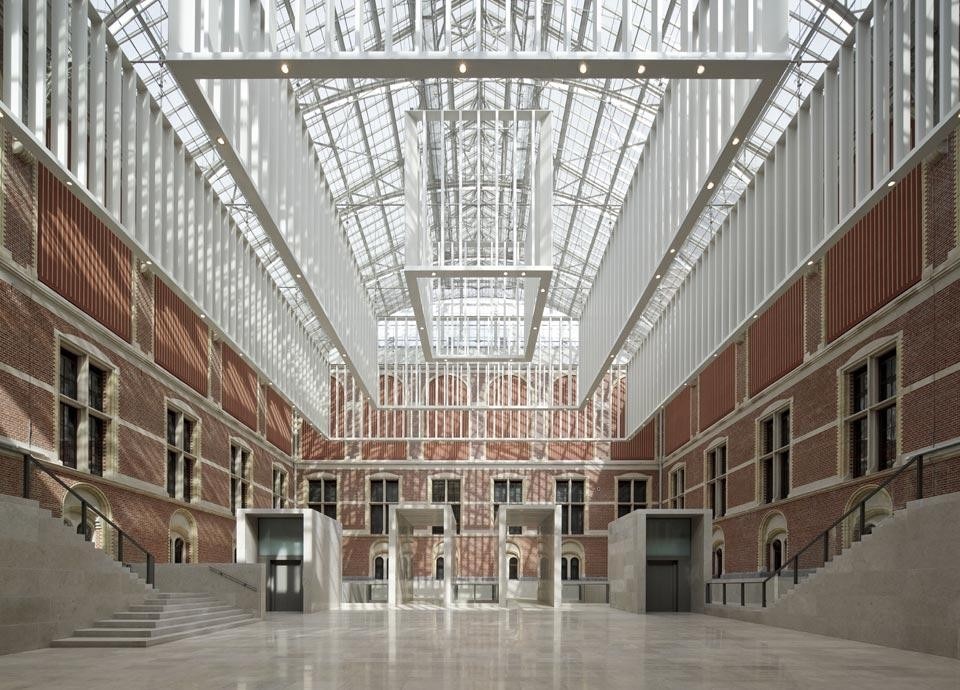The arched passageway, linking the centre and the busy Stadhouderskade to the Oud Zuid area of the city and the Museumplein, was part of the brief to architect P. J. H. Cuypers, who was also responsible for the city's Centraal Station. Originally, the Rijksmuseum was intended not only to house the nation's art treasures, but also to function as a gateway to the then newly developed southern axis of the city — a dual purpose which caused problems both for Cuypers and for the renovation project.
Having won the competition in 2001 to redesign and expand the building, Spanish architects Cruz y Ortiz had planned to convert the passageway into the main entrance of the museum, with a monumental staircase leading to the basement. The passageway was an "everlastingly unsatisfactory solution," says Antonio Ortiz García of Cruz y Ortiz. "Running in a north-south direction, the passageway cuts the building into an east and a west wing, disabling any continuity in the exhibition routes."
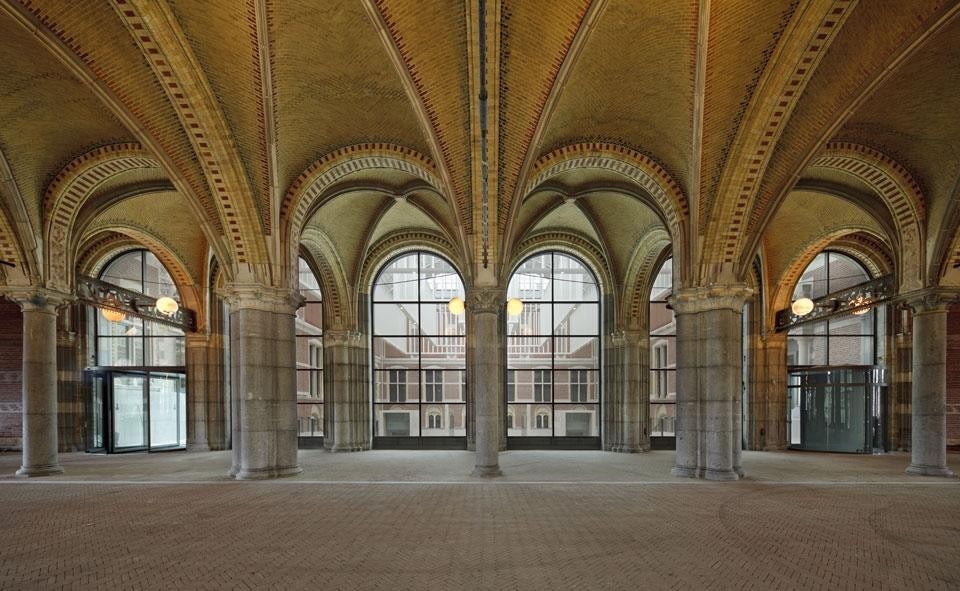
Now, the museum has four entrances in the glass side walls of the passageway, which is preserved as a thoroughfare. While it is a compromise, this solution is a huge improvement on the former state of affairs: visitors are greeted not by the cramped and dingy stairwell of the former entrance, but by two soaring atria, which are linked by a new tunneled space passing under the cycle passageway.
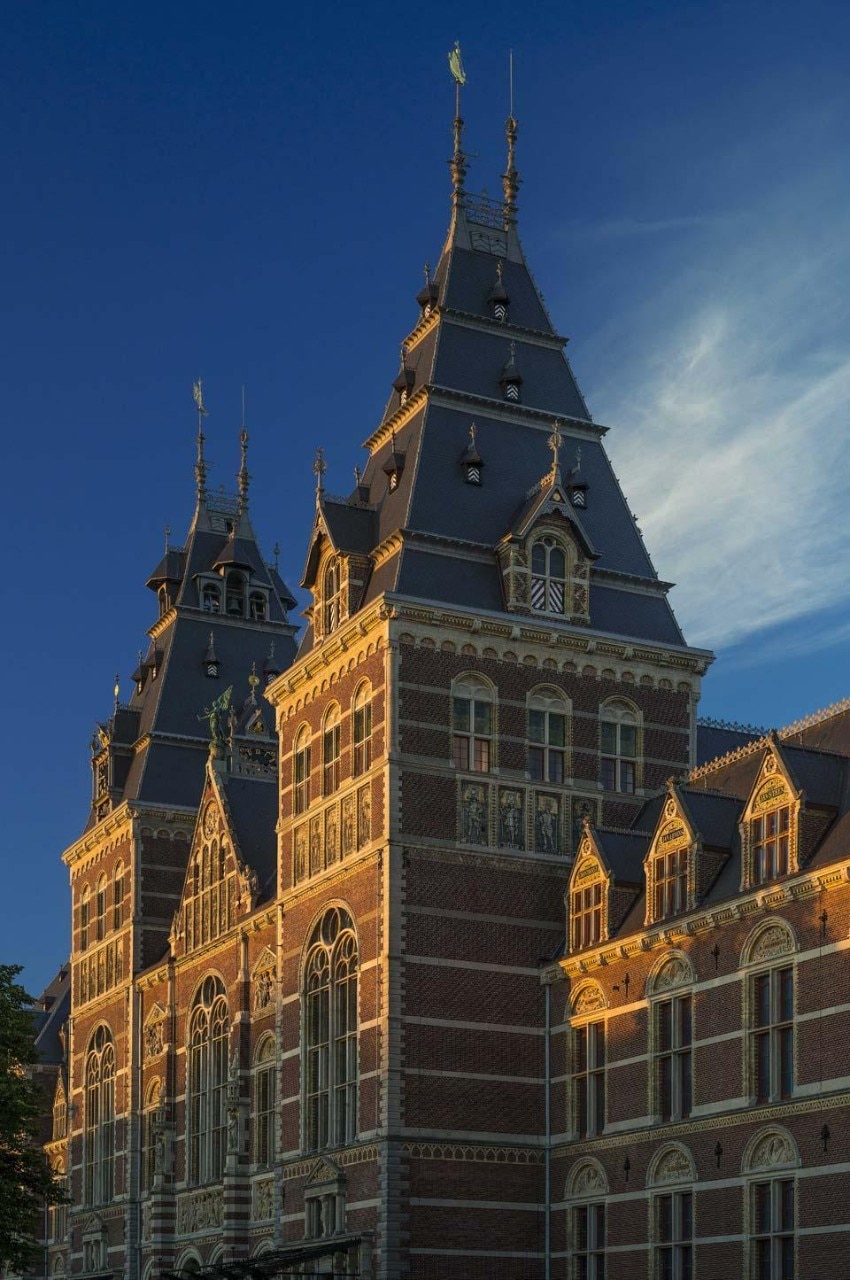
Opening up the courtyards to form the atria of the new museum "provides light and orientation and enables the museum to have an entrance hall of important dimensions," adds Ortiz. "The virtue of connecting both courtyards by means of a modest hall underneath the passage is one that we — thanks to present-day techniques — could execute; it was a limitation that Cuypers had to live with in his day. With this new connection, a logistical bottleneck is solved."
The light-filled atria, the twin courtyards of Cuypers' original design, have not been seen for the best part of a century
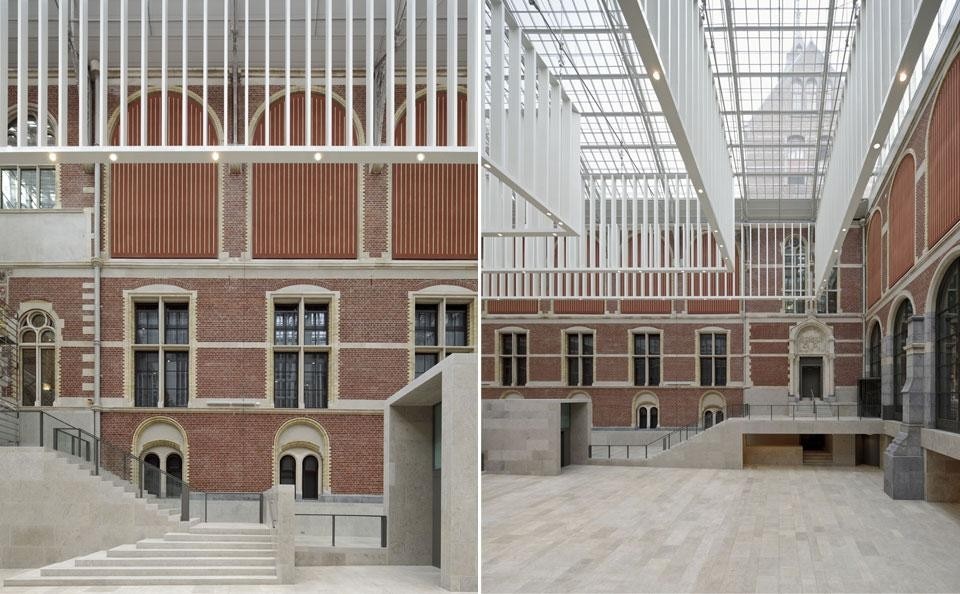
Although still cut off from each other by the passageway, the atria add an experience of space that was sadly lacking in the Rijksmuseum prior to its renovation. Accentuating the effect are the twin cage-like "chandeliers" devised by the architects as an acoustic solution and to house lighting and security facilities. The old outspoken neo-Gothicism of Cuypers and the contemporary monumentalism of Cruz y Ortiz co-exist surprisingly easily. Both, actually, look as though they will be fading into the background as the new, commercial purpose of museums takes centre stage, with much of the new space swallowed by a large café and a gift shop selling various items, including enormous stuffed versions of Miffy, the white cartoon rabbit invented by Dick Bruna.
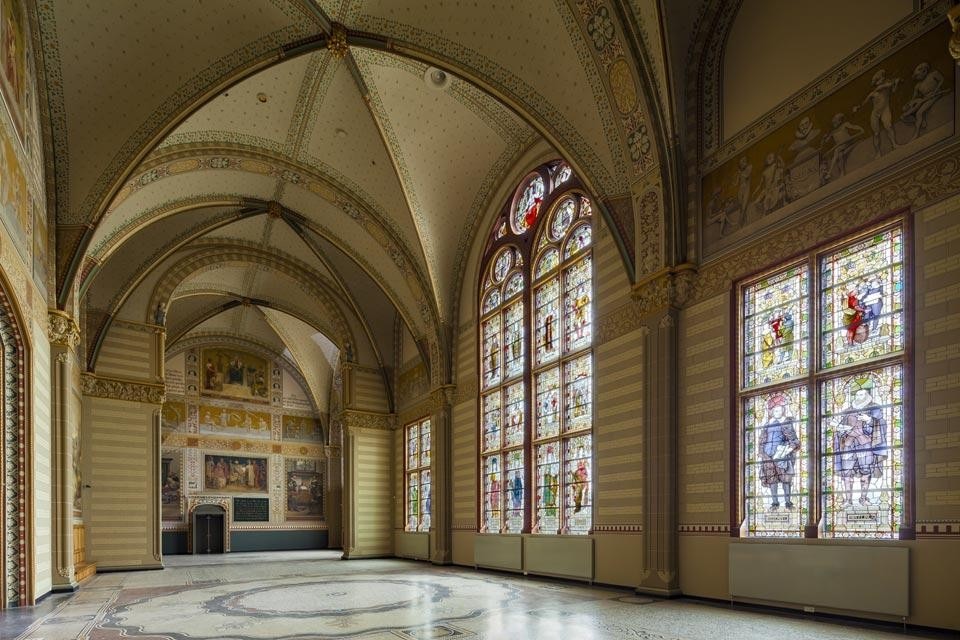
Nevertheless, coexisting with Cuypers has not been easy. Says Ortiz: "It's possibly best to call it a love-hate relationship." Jane Szita


